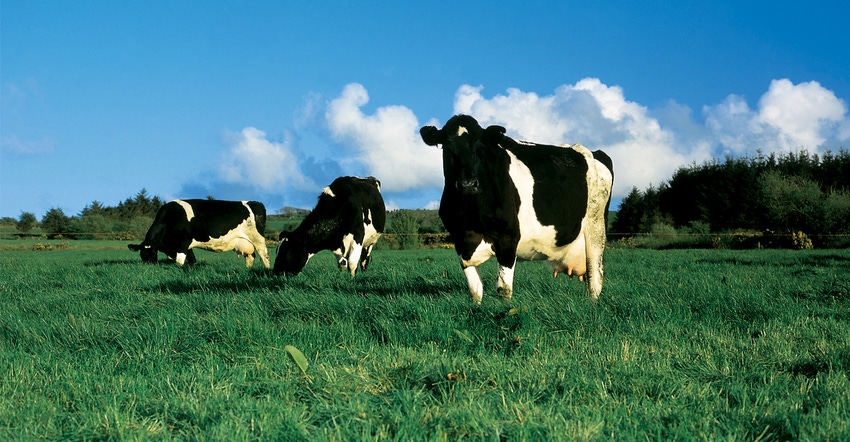January 31, 2019

For some, the calving season is almost upon us, while for others, the start of the calving season still is a few months away.
The following are practices to consider in preparing for the upcoming calving season:
1. Pay attention to nutrition needs of bred heifers or cows before calving. Adequate body condition at the time of calving for young females and mature cows affects stamina during delivery of the calf, colostrum quality and calf vigor, as well as subsequent rebreeding. Adequate nutrition during the last trimester of pregnancy and especially the last 50 to 60 days before calving is important. Two-year-old heifers and 3-year-old cows are vulnerable during this time period. These young females still are growing themselves while growing a calf inside them. As this calf grows and takes up room, rumen capacity is affected and the amount of feed the young female can eat is reduced. The effect of this condition can be compounded when this time period before calving coincides with cold weather and available forage that is low in energy and protein. Body condition can deteriorate rapidly under these conditions.
2. Review your herd health plan with your veterinarian. The production system should be discussed, identifying critical control points where management could reduce risk and effectively improve herd health. Utilize treatment records from last year to identify areas where problems occurred. Use this information to develop a plan to specifically address management options to mitigate health problems that have historically been a problem.
3. Make sure calving facilities are in good working order. Frequently, it has been nine to 10 months since calving facilities have been used. Inspect gates, pens, alleys and head catches, fixing or replacing broken items. Good lighting is an important part of a calving facility. Check lights and have replacement bulbs on hand. Thoroughly clean calving areas, pens and barns. Starting the calving season with clean areas can help slow the development of health problems related to "dirty" areas that can encourage disease proliferation.
4. Check your calving supplies. Make sure you have plastic sleeves, obstetrical lube, obstetrical chains or straps, esophageal feeders and calf feeding bottles. Have a conversation with your veterinarian about products they would recommend that you need to address common treatments for calving-related problems. This can include things such as oxytocin and antimicrobials. Products to address post-calving complications such as calcium solutions and electrolytes could be beneficial as well. Having these products available allows for timely use and can enhance the likelihood that animals will recover when treatment is needed.
5. Review the stages of calving and know when assistance is needed. There are several good Extension resources available to producers to help identify and understand the stages of calving, including "Assisting the Beef Cow at Calving Time" from the University of Nebraska-Lincoln Extension and "Calving and Handling Calving Difficulties" by Robert Mortimer, DVM emeritus faculty from Colorado State University. Review how to correct abnormal presentations and assist the heifer or cow during calving. Knowing your limitations and when it is time to call your veterinarian could save the calf's life, the cow's life or both.
6. Have colostrum or colostrum replacement products on hand. Absorption of quality colostrum is critical for passive immunity. The calf's ability for absorption of immunoglobulin across the intestine decreases rapidly 6 to 12 hours after birth. It's critical that the calf receive colostrum during this time. It is a good practice to immediately milk out a heifer or cow when she is assisted at calving and provide this colostrum to the calf. When possible, have the calves nurse to get this colostrum.
If quality or quantity of the colostrum is a concern, other sources of colostrum or colostrum replacement products should be used. Use caution when bringing outside sources of colostrum into the herd as disease transfer can occur. The best source of colostrum is from within your own herd.
7. Have a plan and equipment for warming calves if calving during cold weather. Calves born during cold, wet conditions can quickly succumb to hypothermia. Have facilities, tools and supplies to deal with this type of event. For mild hypothermia (body temperature between 94 and 100 F), giving a calf warm, body temperature colostrum or colostrum replacement products along with drying the calf off with towels and warm air can quickly bring a calf's temperature back to normal. For extreme hypothermia, a combination of warm colostrum with a warm bath can be used.
8. Plan to provide wind protection along with a clean, dry environment. Wet, muddy conditions are stressful both to cows and calves. This kind of environment also provides a situation where disease proliferation is more likely to occur.
A fresh crop of calves is something cow-calf producers look forward to each year. Having a plan and preparing ahead of time for the calving season can help minimize calf loss and reduce stress on those caring for the cow herd. For information on management practices to improve calving success, visit beef.unl.edu.
Berger is a Nebraska Extension beef educator. This report comes from UNL BeefWatch, which is solely responsible for the information provided and is wholly owned by the source. Informa Business Media and all its subsidiaries are not responsible for any of the content contained in this information asset.
About the Author(s)
You May Also Like




